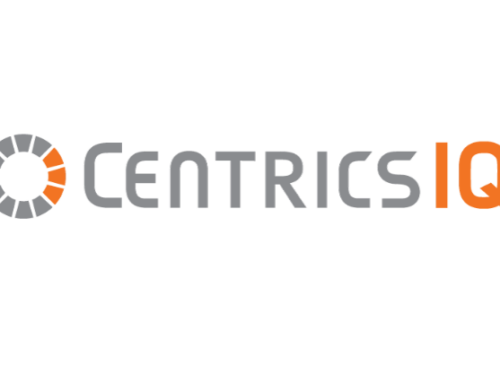Take 6 minutes to read this article
A data center relocation is a costly, high-risk IT project. The decision to plan and execute a data center move is not one that is taken lightly or made hastily. The biggest question most IT leaders consider when evaluating whether or not to relocate their infrastructures is: “how much will this impact business operations?” Downtime is a major risk, and it can be costly, but a well-executed data center move won’t impact operations and won’t cause significant downtime. The key factors are preparation and experience—extensive planning can take months or even years, and if your organization lacks personnel with the requisite experience to lay out a solid data center relocation plan, find a partner who can assist. Taking on a project of this caliber without the necessary planning and resources can be catastrophic in terms of costs, data loss, security risks and business downtime.
How Do You Smoothly Execute Data Center Relocation?
We asked our data center move expert Patrick Keuller, Executive Vice President of Global Services, for his tips on executing a smooth data center move. Here’s what he shared:
-
Compile an Equipment Inventory List
The first step an organization considering a data center relocation should take is to perform a thorough site audit and review the equipment in the current infrastructure. Based on that data, you can identify the mission critical machines that might need to be moved first and understand all the dependencies between different pieces of equipment. Then, a decision should be made around which machines need to be upgraded, decommissioned, or replaced. Our data center experts recommend hiring experienced professionals who will audit your site in detail and make recommendations for handling equipment and the data it contains.
-
Determine What Must Move and When
The next step in the hardware relocation process is to review all current contracts with hardware and software providers. Consider the new location’s restrictions and possible compatibility issues. Will your current equipment fit in the new space, or should you consider options that increase the density of your environment? This might also be a good time to replace a vendor you haven’t had a great experience with or negotiate a better deal.
Our team of data center experts strongly encourages scheduling the target migration date to a time that does not interfere with a heavy business period or a major internal project. You should have a very clear understanding of peak performance and backup windows and try to avoid the move during those times.
-
Select a Relocation Method
Once you’ve determined what equipment is relocating, decide whether it will all be moved at once, also known as a Big Bang, or in phases. Executing the hardware relocation in phases will enable you to get parts of the data center back up and running before the entire system is moved, which could help reduce downtime.
However, keep in mind that equipment relocations can be very risky, and if any parts break down before being re-installed in the new location, you might not be able to get your system back up in the desired timeframe. If keeping downtime at a minimum is key for your organization, our experts recommend a swing gear option that temporarily recreates your data center at the new location and keeps it running for the duration of the migration.
-
Build an Internal Team or Hire an Expert
If you have the experience and capabilities to handle a data center migration in house, group your employees into teams and assign a project manager to keep everyone on task. Consider assigning a person or team to perform the qualitative tasks that are part of the discovery process. Aside from the physical relocation of hardware, a large portion of the planning revolves around consulting with users and employees to determine dependencies between databases and applications. Consider using a bundling algorithm that deploys these elements together if you must take these dependencies into consideration.
Many times, even if your organization is equipped with the required talent and experience, these complex equipment migrations can take up too many internal resources and keep your team from handling other equally important projects. Make sure to consider logistics costs, the coordination of the transport, managing the chain of custody, and many other requirements such as insurance coverage and Conflict of Interest (COI) guidelines.
If the project calls for specialized help, make sure to pick a team that has experienced different types of data center migrations and can assist with the entire project. For instance, if the project requires disposing of old equipment, consider which data erasure method is best for your business: data wipe or physical data destruction?
-
Document and Test the Migration
It’s very important to document the entire data center migration process. Place tags on all the equipment and clearly identify what’s headed for migration. If a piece of equipment is migrating, look up the warranty information and serial number. Make sure the warranty is not at risk for becoming void during the equipment migration. If you have service contracts, make sure to notify the vendors and coordinate the relocation. Some equipment may require special licensing in order to run concurrently as you relocate over to the new facility.
Now is also the time to set up disaster recovery plans. Testing disaster recovery is a smart way to prepare for the actual migration.
After everything is installed in the new location, begin testing right away. Check the equipment in the new location against your inventory list to ensure nothing was misplaced along the way. Finally, test all systems and applications to ensure they are running correctly.
There is a lot to keep track of during a data center relocation. These five tips are meant to help you think through a data center migration project and consider all the factors involved in the process. The biggest takeaways are to start with a strong plan and document every step along the way.
CentricsIT can help you plan and execute your data center move. Whether you’re moving a single server next door or an entire data center across the country, our data center relocation services are designed to turn this intricate process into a worry-free project for your team. For complex moves, we offer site audit services to help you determine which equipment is suitable to move and which should be decommissioned, upgraded, or replaced. Once a plan is in place, we will assess your power requirements and ensure that all the necessary cabling, rack mounting hardware, and additional items are available. Throughout the entire process, we will ensure that data center downtime is minimized and you can resume business as expected.
Contact the experts at CentricsIT today to start planning your next data center move.




